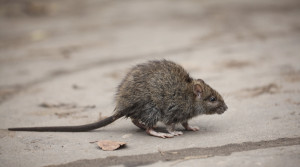Mice
Though it has certainly taken its time in coming, the cold weather is finally returning to Georgia. While this is good news for fans of layering and hot cocoa, colder weather brings problems for homeowners in the form of invasive wildlife pests.
As the temperature drops, many creatures abandon their homes in the wild and seek out new, warmer locations to nest and survive the winter. Unfortunately, your home is the ideal place, and homeowners are often inundated with new and troubling pest threats! One such pest, the house mouse, has been increasingly active in the greater Cherokee county area.
So what are house mice, and how can they create problems for homeowners?
The common house mouse grows to a little over 7 inches in length from nose to tail and is covered in short fur that is typically gray, brown, or black in coloration. House mice are extremely curious creatures and are often found in the wild in areas such as fields and spaces with significant foliage. These mice are active during the day, and will typically explore their environment in search of food.
Like most species of mice, the house mouse has an extremely varied diet. While they have a preference for nuts and seeds, they are opportunistic scavengers and will eat almost any type of food when available.
Because they do not hibernate, house mice must find somewhere to survive through the winter. This will often lead them to homes that are both warm and have a readily available food source. These mice are quite skilled at infiltrating structures and can take advantage of the smallest gaps and cracks in the exterior of the home. Common areas that are often exploited by house mice include:
- Unscreened vents
- Cracks and gaps in the exterior structure
- Crawlspaces
- Unsealed windows and doors
- Roof damage
Any of these areas, and many others as well, can be the avenue that allows the mice inside the home. Once they are inside, the mice will typically establish a comfortable living space in a small, secluded area. They will often take nest building materials from the home and can cause damage to insulation as well as wiring and piping in some instances. While the degree of destruction largely depends on the size of the infestation, damage done to wiring and other important parts of the home can create a fire risk.
So you may be wondering, how can you know if mice are active in your home?
Like many wildlife pests, house mice are often discovered due to homeowner’s overhearing “bumps in the night” caused by the pests moving around after dark. Oftentimes these sounds can be hard to trace because the mice could be moving in almost any part of the home, including inside the walls and ceiling.
Another common sign of house mouse activity are leftover droppings in areas that they frequent. These resemble a rod or pill shape and are usually fairly easy to identify. If you are concerned about potential mouse activity in your home, it is often best to call a licensed pest control provider to inspect your home. While you might be tempted to save money using methods with less upfront expense such as DIY traps, this approach is often ill-advised. While a trap is an excellent way to catch one or two mice, DIY traps often do little to deal with the majority o the infestation that remains safely hidden in nesting sites. On top of this, these traps also do not help you to identify how the mice have entered the home, and thus leave you exposed to potential future infestations. Due to these reasons and more, you will often save yourself money and expense by calling in professionals sooner rather than later.
So WHO should you call if you are dealing with mice?
At Canton Termite and Pest Control, we have decades of experience serving is the leading pest provider for the greater Cherokee county area. We offer a wide range of targeted pest solutions designed to deal with any pest problem you might encounter quickly, safely, and effectively!
So if you are in need of pest or wildlife control, or simply have a question, call us today at 770-479-1598!
By: Tim

